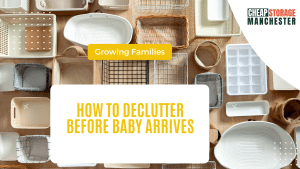Downsizing your home can be a freeing experience, but it also means facing one big challenge — deciding what stays and what goes. Years of belongings can feel impossible to sort through, and emotions often play a part in every decision.
The good news is that you don’t need to make every choice right away. With a clear plan and help from self storage, you can move at your own pace, keeping what’s important while freeing yourself from unnecessary clutter.
Here’s how to decide what to keep, sell, or store when moving to a smaller home.
Step 1: Take Stock of What You Have
Before you make any decisions, start by assessing what’s in your current home. Go room by room and make a simple list of what you own. Seeing everything written down can help you visualise what will realistically fit in your new space.
Start with:
- Furniture and large appliances
- Clothes and linens
- Books, décor, and collectibles
- Kitchen and dining items
- Sentimental items like photos or heirlooms
Having this overview helps you decide what’s worth moving, what could be sold, and what might be best stored safely.
If you need extra time to sort through it all, use home storage to keep items secure during the process.
Step 2: Measure Your New Space
When moving to a smaller home, space is limited — and guessing what will fit rarely works. Take measurements of each room, including wall space, doorways, and storage areas.
Then, compare those measurements with your existing furniture. This will make it much easier to see which pieces are worth keeping and which might be too large.
If you’re unsure about certain items, move them into temporary storage until you’ve settled in and can make a final decision.
Step 3: What to Keep
When choosing what to keep, focus on the things you use every day and the items that genuinely bring you joy or comfort.
Keep:
- Furniture that fits your new home’s layout
- Quality kitchen appliances or tools you use often
- Comfortable clothing and essentials
- Sentimental items that hold personal meaning
- Documents, photos, and heirlooms you’d never replace
Be honest about duplicates. If you have two of something, one can probably go.
You can always use secure storage for valuables that you want to keep long-term but don’t have room for right now.
Step 4: What to Sell
Downsizing can also be a great opportunity to earn some extra money. Many items that no longer fit your lifestyle could still be valuable to others.
Sell:
- Furniture that’s too large for your new space
- Collectibles or antiques you’re ready to part with
- Unused tools, garden equipment, or bikes
- Electronics you no longer use
- Duplicate homeware and kitchen items
Try local marketplaces, community groups, or car boot sales. If you’re selling larger items, our Free Van Hire can help you move them safely.
If selling feels overwhelming, donate instead — it’s just as rewarding and much faster when you’re trying to simplify.
Step 5: What to Store
Not everything you can’t keep should be sold or donated. Some items are better placed in storage, especially if they have sentimental or seasonal value.
Store:
- Family heirlooms and keepsakes
- Holiday decorations
- Furniture you might pass to family later
- Seasonal clothing or sports equipment
- Files, records, or personal paperwork
Our Safe and Secure Storage gives you peace of mind that your belongings are clean, dry, and protected.
And if you’re not ready to commit long term, you can take advantage of no deposit and half-price for 9 weeks offers while you decide what to do next.
Step 6: Make It a Gradual Process
Downsizing doesn’t have to happen overnight. Give yourself time to sort through items in stages — it’s less stressful and helps you make more confident decisions.
A good approach:
- Start with non-sentimental areas like the kitchen or garage
- Move on to decorative or duplicate items
- Save sentimental items for last
- Use storage as a buffer when you can’t decide
By spreading the work out, you’ll feel more in control and less overwhelmed.
For more advice on managing big life changes like this, visit our Life Events page.
Step 7: Involve Family or Friends
Sometimes it helps to have another perspective. Ask family or close friends to help you sort and pack. They can often provide useful input — or take items you’d like to keep within the family.
You can even turn sorting sessions into something positive, sharing memories as you go. For many people, this is one of the most meaningful parts of downsizing.
Step 8: Keep Sentimental Items Safe
It’s normal to struggle with letting go of items that carry personal history. Instead of feeling pressured to make quick decisions, store them safely until you’re ready.
Our storage units are ideal for protecting keepsakes, photos, and delicate items while keeping your new home clutter-free.
Over time, you might find it easier to decide what you truly want to keep permanently.
Final Thoughts
Downsizing is about simplifying life, not losing the things that matter. By keeping what’s useful, selling what’s no longer needed, and storing the rest, you’ll make your move smoother and more manageable.
At Cheap Storage Manchester, we help people transition into smaller homes confidently and without stress.
Explore our Prices or Contact us today to book a secure storage unit and start your downsizing journey.



